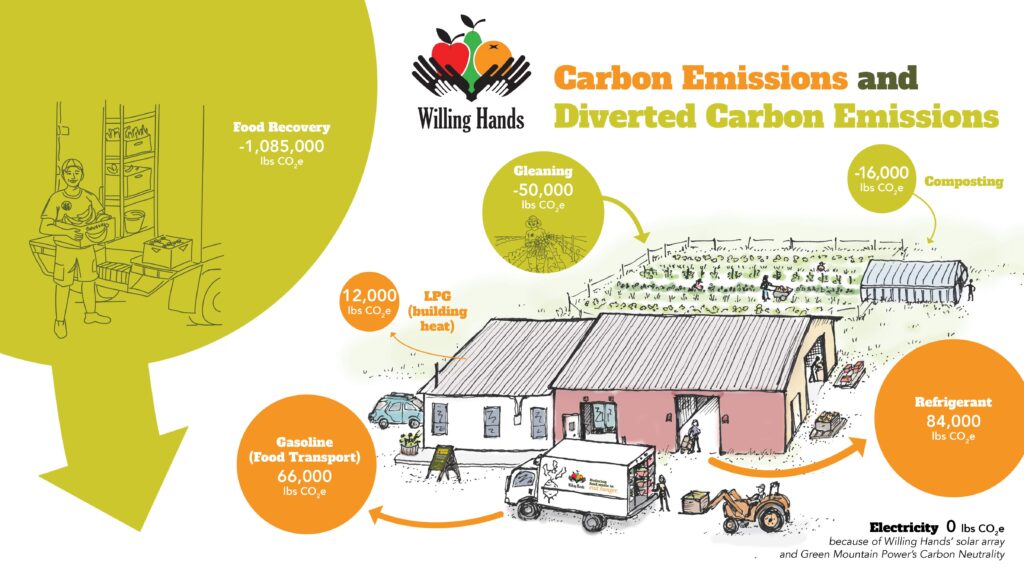Reducing Food Waste
The USDA estimates that 30 to 40 percent of all food in the United States is wasted, never reaching the stomachs of people who need it. Not only is the food wasted, but the labor and energy resources required to grow, process, and transport the food are also lost.
Due to unpredictable weather and markets, Upper Valley farms, bakeries, and grocery stores generate surplus. Thanks to strong partnerships with local farms and businesses, Willing Hands recovers the surplus through daily, year-round pick-ups and seasonal gleans. Our volunteer gleaning crews harvest surplus produce from fields and orchards, ensuring these valuable foods are available to eat rather than left to biodegrade.
With the help of hundreds of volunteers, our gleaning and food recovery programs recovered over 800,000 pounds of fresh food in 2023.


Reducing Carbon Emissions
DID YOU KNOW?
Willing Hands is a leader in community-scale climate solutions. Food recovery is one of the most important things we can do to address
the climate crisis; in fact, reducing food waste is 10 times more impactful than transitioning to electric vehicles. That’s because when food goes to waste it harms the climate in two ways: first by wasting all the energy that went into producing it, and second by producing methane–a greenhouse gas which is 25 times more powerful than carbon dioxide—as it rots in the landfill.
CLIMATE ACTION PLAN
By reducing food waste, Willing Hands avoids 1 million pounds of carbon dioxide-equivalent emissions (CO2e) annually. We plan to double this negative carbon footprint by 2026, for a total of negative 2 million pounds CO2e. We will achieve this ambitious goal through two primary avenues: reducing direct emissions from our daily operations, and increasing avoided emissions through food recovery. Additionally, we aim to inspire other organizations, and the community more broadly, to take action on climate change through reducing food waste.


